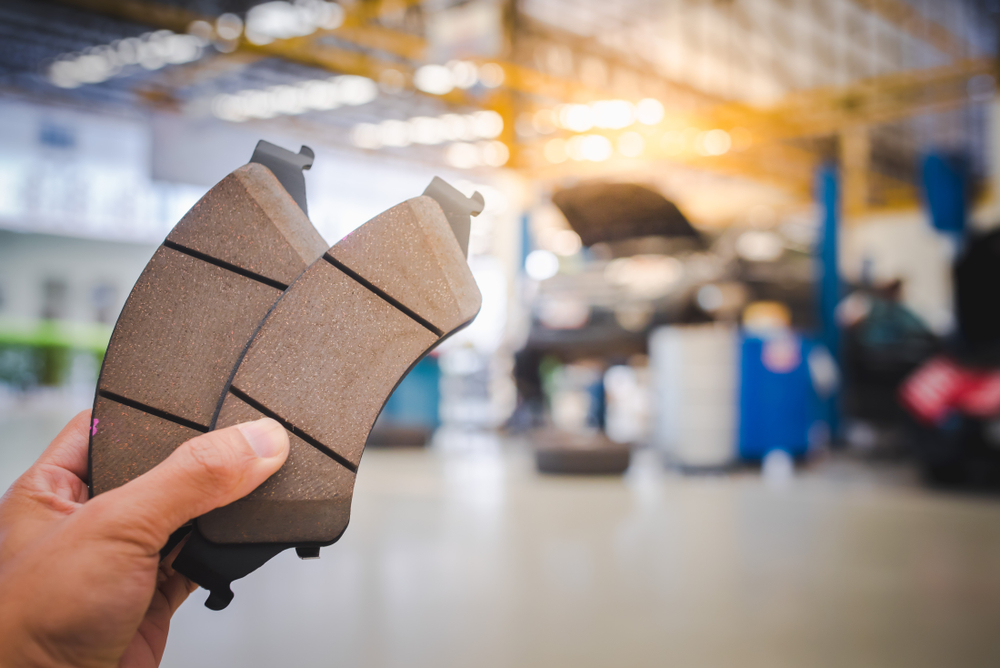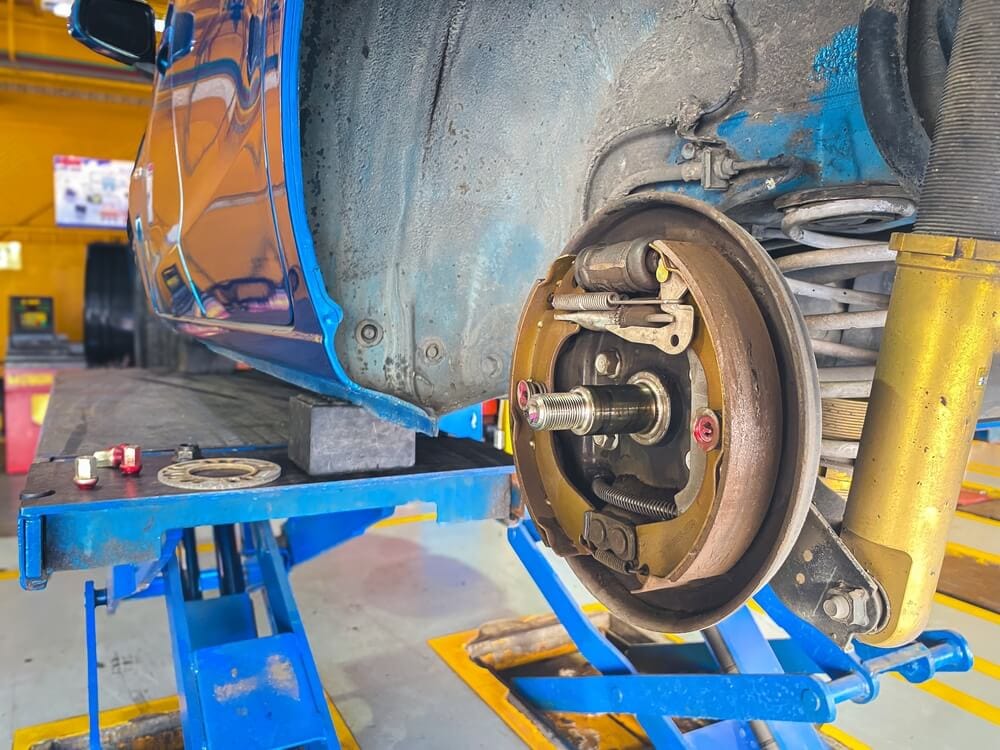How long do brake shoes last?
Does your car have a drum braking system? This is common in older cars or models with a combined braking system. For example, disc brakes at the front and drums at the rear brakes. Both systems contain wearing parts that eventually will need to be replaced. Brake shoes are made of friction material that pushes against the brake drum, causing enough braking force to slow the car. Friction material wears down over time, and when worn away will make an audible sound when pressing against the brake drum. This is your sign that the brake shoes need replacing. In this article, we’ll discuss the regular service intervals for brake shoes and how to tell when they need replacing. Natrad has a range of quality brake shoes from globally recognised leading friction manufacturers. This means we’ll be able to easily replace the brake shoes on your car.
Changing brake shoes
As with every vehicle, regular service intervals indicate when certain parts should be replaced. Sticking to the recommended intervals is a great way to protect your car and prevent costly damage and repairs in the long run. So, how do you know when to replace your brake shoes? A good estimate is roughly every 30,000 km, when you should at least have them inspected for wear. Natrad workshops can inspect your braking system and recommend any necessary servicing or repairs. You can also check your owner’s manual, which will have the recommended time frame specific to your vehicle. This change interval also varies from vehicle to vehicle. If your mechanic didn’t recommend replacing them at your recent service, they may have a bit more life left in them. At that point, it’s up to you to listen out for abnormal sounds demonstrating that the wear limit has been reached. When the metal backing rubs against the drums, it will make a grinding or scraping noise, alerting you that the shoes require replacing. A brake shoe might last a bit longer depending on the driver and vehicle type. Factors that can influence the lifespan include:
- Driving style
- Driving conditions
- Driving frequency
- Driving distance
For example, hard braking can reduce the lifespan of the brake system and, therefore, the shelf-life of its components.

Brake shoes vs brake pads
So, why brake shoes? Brake shoes are used in drum brakes, which are a popular, cost-effective braking system used in many cars today. While many modern cars make use of disc brakes (also known as rotors), often you will find a car has both. Brake shoes and brake pads are very similar since they both use friction material to create braking force. The difference is in the design. Drum brakes work by placing the brake shoes on the inside of the drum assembly, where they expand outwards to press against the drum during braking. Disc rotors have a calliper assembly that contains the brake pads, which then squeeze in against the rotor during braking. They are both good options, it just depends on what your vehicle needs. Natrad has a range of high-quality brake shoes and brake pads suitable for a wide variety of vehicles.
Brake shoes in drum brakes
So, what are the common signs that you need to change your brake shoe? We mentioned earlier that wear indicators are designed to make a noticeable noise when the friction material has worn away – but what if there are other issues? Below are some common symptoms of brake drums that need to be replaced:
- Inconsistent brake pedal feel: If your brake pedal is soft, spongy, vibrating or juddering, something is wrong. The brake shoes may be worn, resulting in effective braking. There may also be issues with pressure in the brake lines due to problems with the brake fluid.
- Parking brake: if your brake feels loose, it may not engage correctly. It could be your brake shoe being worn or out of place, or possibly a broken cable.
- Vehicle swaying: if the car is veering to one side during braking, you might have uneven wear on the brake shoes. This can lead to the car braking inconsistently to one side.
If any of these sound familiar, just speak to your nearest Natrad today. The friendly staff are here to help and assist you with any braking problems.

Brake shoes replacement: what’s involved?
Replacing brake shoes is a critical part of maintaining your vehicle’s braking system, particularly for vehicles with drum brakes. Brake shoes are responsible for creating the friction needed to stop your vehicle, so timely replacement is essential for safety and performance. Here’s an overview of what’s involved in replacing brake shoes:
- Inspection and preparation
- The vehicle is safely lifted and secured using a jack and jack stands.
- The wheels are removed to access the drum brake assembly.
- The drum brake components are inspected to assess the condition of the brake shoes, drum, and other parts.
- Removing the old brake shoes
- The brake drum is carefully removed to expose the brake shoes.
- The springs, clips, and other retaining hardware holding the brake shoes in place are detached.
- The worn-out brake shoes are taken out, ensuring no damage is caused to surrounding components.
- Installing the new brake shoes
- The replacement brake shoes are installed, along with any new hardware if required.
- The components are reassembled, including springs and clips, ensuring everything is secured properly.
- While the brake drum is removed, it’s a good idea to measure and check it has not reached minimum thickness.
- Reassembly and testing
- The brake drum is refitted, and the wheels are reattached.
- The brakes are adjusted to ensure the proper fit of the brake shoes.
- A thorough test is performed to confirm the brakes are functioning smoothly and effectively.
Why professional help matters
Replacing brake shoes involves precise steps, tools, and adjustments to ensure optimal braking performance. Mistakes during the process can lead to poor braking efficiency or safety risks. At Natrad, our skilled technicians handle brake shoe replacements with expertise, ensuring your brakes are reliable and safe for the road. Contact Natrad today to schedule your brake service and drive with confidence.
Get help with your brake shoes at Natrad
If you think your brake shoes or brake drums are on the way out, don’t fret! Natrad workshops across the country can inspect, diagnose, repair and service your braking system with confidence. Just speak to the specialists about a brake shoe replacement today.









